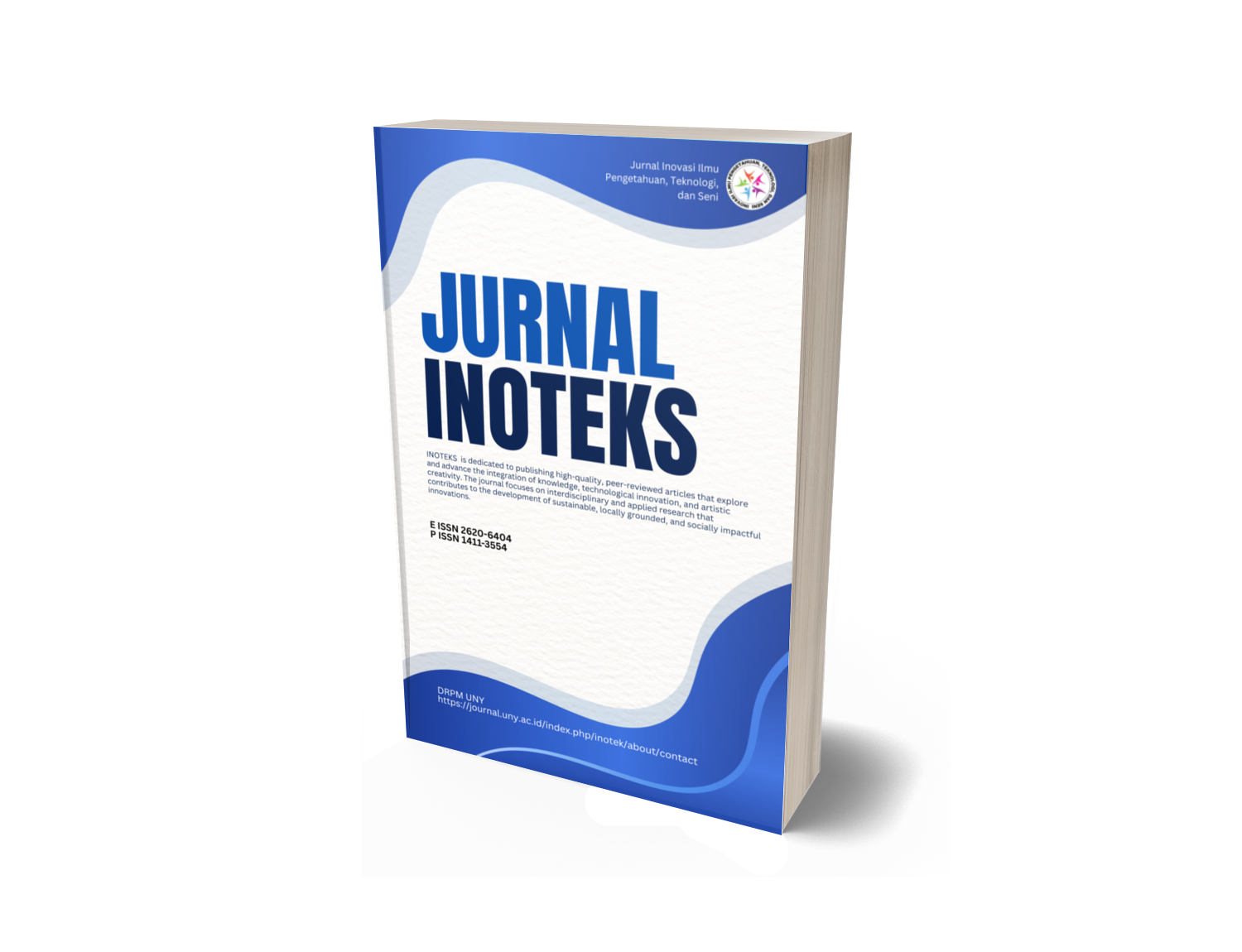Perspectives of High School students in DIY province on Esport
DOI:
https://doi.org/10.21831/ino.v1i1.59675Keywords:
e-sport, high school, communication, workAbstract
hand disagreeing at 4.3%. Students also like to play e-sports with an agree rate of 61.7%, although those who disagree are 6.4%. e-sports can be categorized as sports with the number agreeing at 61.7%, and those who disagree are 2.1%. The students also agreed with e-sports they got a lot of acquaintances with a rate of 59.6% and disagreed with 6.4%.
References
Achmad Ali Fikri, Syamsul Arifin, M. F. F. (2022). STADION E-SPORTS DENGAN PENDEKATAN KONSEP ARSITEKTUR HIJAU DI JAKARTA. ×”×רץ, 2(8.5.2017), 2003–2005.
Arikunto Suharsimi. (2013). Prosedur penelitian suatu pendekatan praktik. In Jakarta: Rineka Cipta (p. 172). http://r2kn.litbang.kemkes.go.id:8080/handle/123456789/62880
Bednárek, D., KruliÅ¡, M., Yaghob, J., & Zavoral, F. (2017). Data preprocessing of eSport game records: Counter-strike: Global offensive. DATA 2017 - Proceedings of the 6th International Conference on Data Science, Technology and Applications, January, 269–276. https://doi.org/10.5220/0006475002690276
Berger, K. S. (2014). The Developing Person: Through Childhood. In Worth Publishers.
Capehart, G. M. (2001). Total Training for Young Champions. Pediatric Physical Therapy, 13(1). https://doi.org/10.1097/00001577-200113010-00013
Chang, Z. (2019). What's The Hype About Esports ? Lulea University of Technology, 1–26.
Erickson, K. I., Leckie, R. L., & Weinstein, A. M. (2014). Physical activity, fitness, and gray matter volume. Neurobiology of Aging, 35(SUPPL.2), S20–S28. https://doi.org/10.1016/j.neurobiolaging.2014.03.034
Fahmi, A. M. (2022). E-Sport Menjadi Salah Satu Cabang Olahraga. Edukasimu.Org, 2(3), 1–9. http://edukasimu.org/index.php/edukasimu/article/view/95
Fitri, E., Erwinda, L., & Ifdil, I. (2018). Konsep Adiksi Game Online dan Dampaknya terhadap Masalah Mental Emosional Remaja serta Peran Bimbingan dan Konseling. Jurnal Konseling Dan Pendidikan, 6(3), 211–219. https://doi.org/10.29210/127200
Hiew, W. (2012). English Language Teaching and Learning Issues in Malaysia: Learners' Perceptions Via Facebook Dialogue Journal. Journal of Arts, Science & Commerce, 3(1), 11–19.
Mark, V., & David, H. (2006). Intisari Psikologi Abnormal. In Pustaka Pelajar.
Rankin, Y., Gold, R., & Gooch, B. (2006). 3D role-playing games as language learning tools. Eurographics, 25(3), 33–38.
Thiruchelvam, V., & Bee Suan, W. (2022). Recognizing Esports as a Sport from an Academic Perspective. IEEE International Conference on Distributed Computing and Electrical Circuits and Electronics, ICDCECE 2022, May. https://doi.org/10.1109/ICDCECE53908.2022.9792788
Witkowski, E., Hutchins, B., & Carter, M. (2013). E-sports on the rise? Proceedings of The 9th Australasian Conference on Interactive Entertainment: Matters of Life and Death, 1–2. https://doi.org/10.1145/2513002.2513008
Yuracko, K. A. (2002). Title IX and the problem of gender equality in athletics. Gender Issues, 20(2–3), 65–80. https://doi.org/10.1007/s12147-002-0017-1
Yuslianson. (2020). Esports Makin Ngetren, Lapangan Pekerjaan Baru Terbuka Lebar.
Downloads
Published
How to Cite
Issue
Section
Citation Check
License
- Authors certify that the work reported here has not been published before and contains no materials the publication of which would violate any copyright or other personal or proprietary right of any person or entity.
- Authors transfer or license the copyright of publishing to Jurnal Civics: Media Kajian Kewarganegaraan to publish the article in any media format, to share, to disseminate, to index, and to maximize the impact of the article in any databases.
- Authors hereby agree to transfer a copyright for publishing to Jurnal Civics: Media Kajian Kewarganegaraanas a Publisher of the manuscript.
- Authors reserve the following:
- all proprietary rights other than copyright such as patent rights;
- the right to use all or part of this article in future works of our own such as in books and lectures;
- use for presentation in a meeting or conference and distributing copies to attendees;
- use for internal training by author's company;
- distribution to colleagues for their research use;
- use in a subsequent compilation of the author's works;
- inclusion in a thesis or dissertation;
- reuse of portions or extracts from the article in other works (with full acknowledgement of final article);
- preparation of derivative works (other than commercial purposes) (with full acknowledgement of final article); and
- voluntary posting on open web sites operated by author or author's institution for scholarly purposes, but it should follow the open access license of Creative Common CC BY-NC-SA License.








